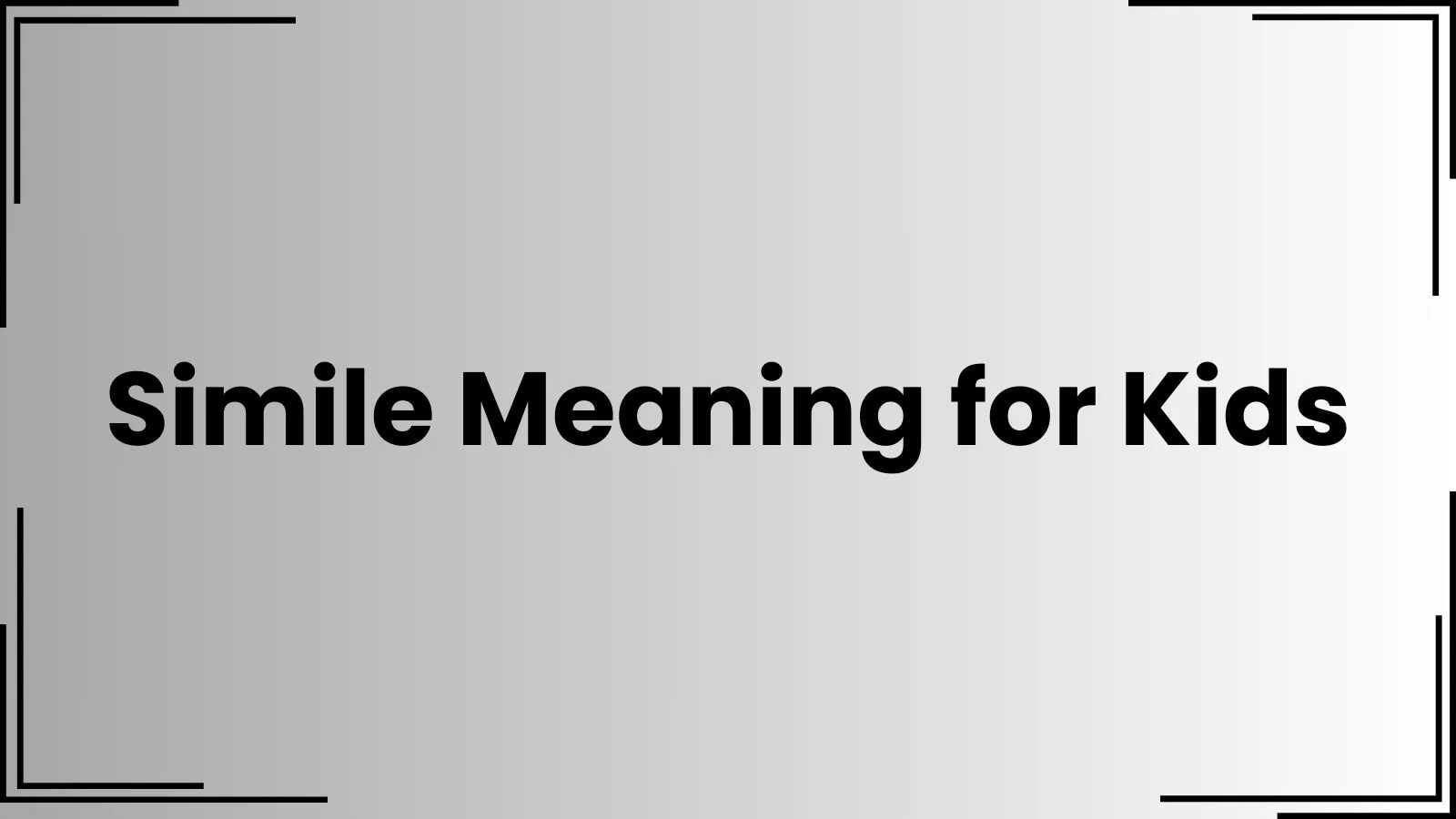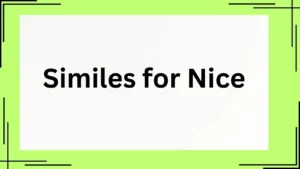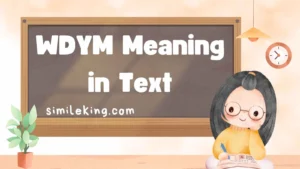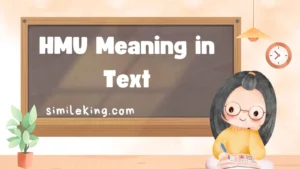Similes are a fun and creative way to describe things by comparing them to something else using the words “like” or “as.”
They help make language more vivid, helping kids visualize and understand descriptions better.
For example, instead of saying “The water is very cold,” a simile might say, “The water is as cold as ice.”
This comparison helps kids imagine just how cold the water feels.
In this article, we’ll explore more than 10 definitions of similes designed specifically for kids.
Each definition includes simple explanations, examples, and tips on how children can use similes in their writing and everyday conversations.
What Is a Simile?
A simile is a figure of speech that compares two different things using “like” or “as.” This helps create a clearer, more imaginative picture in the reader’s mind.
For example:
- “She is as fast as a cheetah.” (Compares her speed to a cheetah’s speed.)
- “His smile is like sunshine.” (Compares his smile to the brightness of sunshine.)
Similes are often used in stories, poems, and everyday speech to make descriptions more interesting.
10+ Simple Simile Definitions for Kids
1. A Simile Is a Word Picture
A simile creates a picture in your mind by comparing one thing to another.
Example:
- “The clouds were like fluffy cotton balls in the sky.”
Why It Works:
Kids can easily imagine soft, fluffy clouds by thinking about cotton balls.
2. A Simile Uses ‘Like’ or ‘As’
A simile always includes the words “like” or “as” to show the comparison.
Example:
- “Her voice was as sweet as honey.”
Why It Works:
It helps kids understand that her voice sounds pleasant and warm.
3. A Simile Makes Writing More Fun
Similes make writing more colorful and interesting by adding creative comparisons.
Example:
- “The ball bounced like a kangaroo.”
Why It Works:
Instead of just saying the ball bounced, kids can imagine it hopping like a kangaroo.
4. A Simile Helps Explain Things
Similes help explain something unfamiliar by comparing it to something well-known.
Example:
- “His hands were as cold as ice.”
Why It Works:
Even if a child hasn’t touched ice recently, they can imagine how cold his hands must have felt.
5. A Simile Makes Language More Expressive
Similes add emotion and expression to language.
Example:
- “She danced like a leaf floating in the wind.”
Why It Works:
It helps kids picture someone dancing lightly and gracefully.
6. A Simile Can Be Funny
Some similes make comparisons that are funny or silly!
Example:
- “He ran as fast as a rocket blasting off!”
Why It Works:
The exaggeration makes it fun to imagine someone running super fast.
7. A Simile Can Be Used in Everyday Speech
Similes aren’t just for books—they’re used in daily conversations.
Example:
- “The baby’s cheeks are as soft as a marshmallow.”
Why It Works:
It makes a common description more playful and relatable.
8. A Simile Helps You Describe Feelings
Similes can be used to describe how people feel.
Example:
- “I felt as happy as a dog with a bone!”
Why It Works:
Kids can relate to the image of a joyful dog to understand extreme happiness.
9. A Simile Can Compare Animals and People
Similes often compare people’s actions to animals.
Example:
- “He was as sly as a fox.”
Why It Works:
It suggests the person is clever, just like a fox.
10. A Simile Makes Stories More Engaging
Writers use similes to make stories more exciting and descriptive.
Example:
- “The thunder roared like a hungry lion.”
Why It Works:
It helps readers imagine the loud, rumbling sound of thunder.
11. A Simile Can Be Used in Songs and Poems
Similes are common in music and poetry to add beauty and rhythm.
Example:
- “Your love is like a melody.”
Why It Works:
It suggests that love is sweet and pleasant, like a favorite song.
How to Use Similes in Writing
Encourage kids to try using similes in their own stories, poems, or everyday conversations. Here are some tips:
✅ Think of Two Things to Compare: Choose something you want to describe and find a fun comparison.
✅ Use ‘Like’ or ‘As’: Make sure to include these words in the sentence.
✅ Make It Creative: Try to choose comparisons that paint a clear picture.
✅ Practice Writing Similes: Create a list of objects and challenge kids to come up with similes.
11 Texting Examples of Similes for Kids
If kids want to use similes while texting or messaging friends, here are some fun and simple examples:
- “I’m as hungry as a bear after a long nap!” 🐻
- “This math homework is as tricky as a puzzle!” 🧩
- “The dog is as fluffy as a cloud!” ☁️
- “My little brother is as noisy as a fire truck!” 🚒
- “That joke was as funny as a clown on roller skates!” 🤡
- “This ice cream is as cold as the North Pole!” ❄️
- “Her new dress is as shiny as a star!” ✨
- “I was running like a race car today!” 🏎️
- “The water felt like a swimming pool in summer!” 🌊
- “That cat is as sneaky as a ninja!” 🐱
- “I’m as sleepy as an owl in the daytime!” 🦉
These examples help kids use similes in a fun and easy way while chatting with friends.
Conclusion
Similes are a simple yet powerful way to make descriptions more engaging and imaginative. They help kids create vivid pictures in their minds and make writing more exciting. By understanding and practicing similes, children can improve their storytelling, poetry, and even everyday conversations.
Encourage kids to use similes in their writing, texts, and speech to make language more fun and expressive. The more they practice, the better they’ll get at creating creative comparisons!





